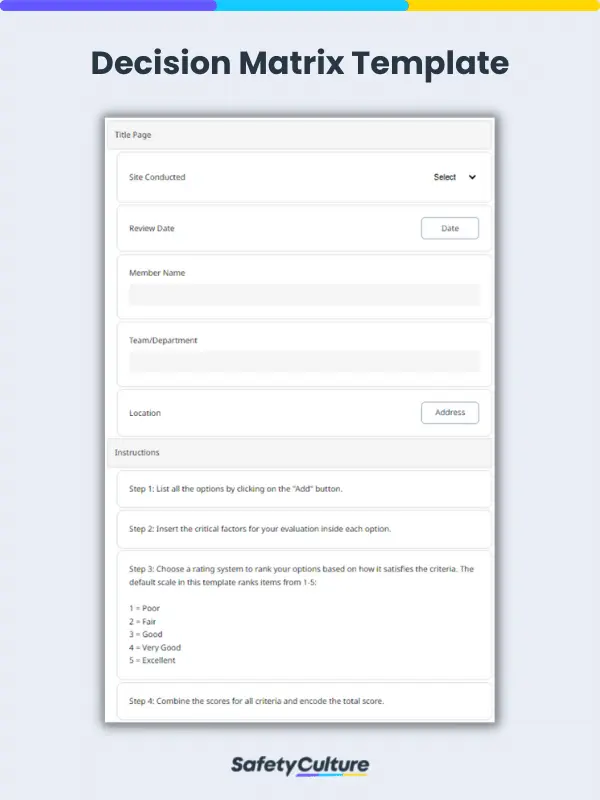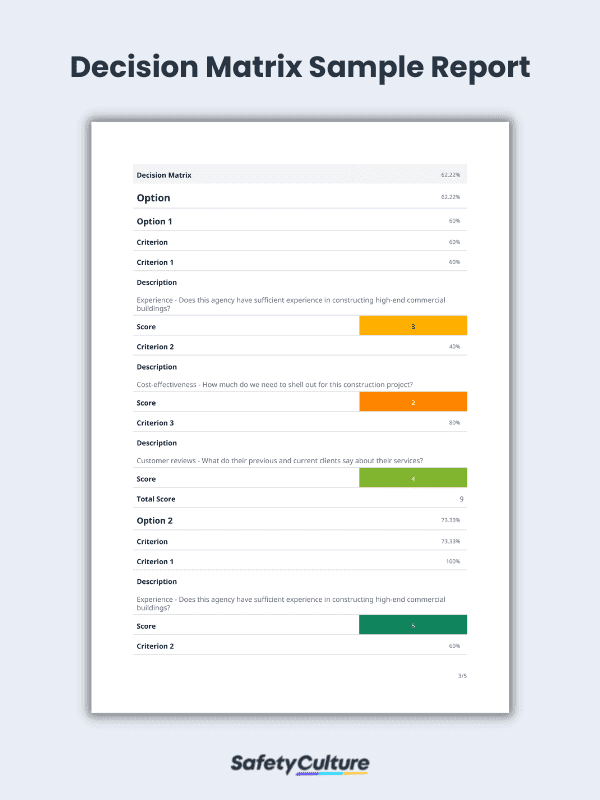What is a Decision Matrix Template?
A decision matrix template is a tool that aids teams in making critical decisions objectively. It takes a quantitative approach to decision-making by scoring a list of options against a specific set of criteria with different levels of importance. Teams can utilize a decision matrix template in assessing project proposals, prioritizing product releases, and other instances requiring impartial decision-making.
Benefits
A decision matrix template is an excellent tool for reaching decisions logically, solving complex problems, and prioritizing tasks. But how exactly do they help decision-makers?
Here are the key advantages of using this decision-making tool.
Clarifies Complex Variables
One of the main benefits of a decision matrix template is a clear map of options for teams. They typically have a long list of options that needs to be arranged for clarity.
A decision matrix template accomplishes this task by summarizing what the alternatives are and how they match up against the specified criteria. Having this concise overview helps teams gain a clear and organized picture of the available choices and benchmarks, empowering them to make sound decisions that meet their business targets.
Effectively Narrows Down Options
The challenging part about making decisions is choosing from a wide array of seemingly equally good options. A decision matrix template resolves this problem by cutting down alternatives that do not fit the criteria. Through this method, decision-makers can focus on a select number of options instead of winding up a long list of choices.
In other words, this decision-making tool helps teams select which task to prioritize or which solution to implement among a list of choices without an obvious winner.
Promotes Objectivity in Decision-Making
Lastly, a decision matrix template leads teams to reach a viable decision through quantifiable metrics. Instead of arbitrarily choosing a route, this decision-making tool enables them to rank their options on a numerical scale.
Thus, it allows more room for a logical assessment of options based on definite and measurable criteria. This method also leaves little space for biases and other factors that can cloud one’s judgment.
What Should It Include?
A decision matrix template consists of the following components: options, criteria, scores, and weight. Learn how each of them fits in the steps of creating a decision matrix.
Options
A decision matrix template begins with a list of choices. This list shows the alternatives you’re choosing from and can include a short description of how they work. Then, teams will evaluate these options against the next component—criteria.
Criteria
After rounding up the shortlist of options, you need to build your benchmarks. These should consist of quantifiable characteristics that you’ll be measuring your options against. They will help you narrow down your choices and help you select the best course of action.
Score
Scores are vital for determining the results in a decision matrix, as they allow you to measure and rank your options. The results will depend on the scoring system you implement. Consider the following scoring systems for your decision matrix:
- 1-3 scale (1 = low, 3 = high)
- 1-4-9 scale (1 = lowest priority, 9 = highest priority)
- 1-5 scale (1 = least important, 5 = critical)
Decision matrices also follow scoring types, depending on the scale you use. Here’s a guide to clarify the types of scores used in this decision matrix template.
- Rating – the numerical value for how the option fits the criterion
- Total score – the score attained from adding the rating and weight of the criterion
- Overall score – the combined scores of all criteria for each option
Weight
Most decision matrices will include a weight component, especially for a weighted decision matrix template. This component allows teams to rank their criteria according to their relevance or significance to the project or decision.
By adding this dimension to the decision matrix, teams can prioritize which items in their criteria carry more weight compared to the others.
Decision Matrix Template Example
The example below illustrates how a decision matrix report works using a digital platform:




